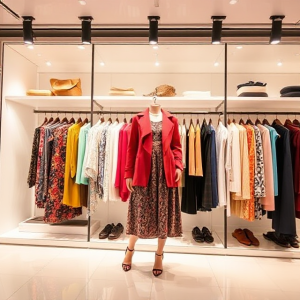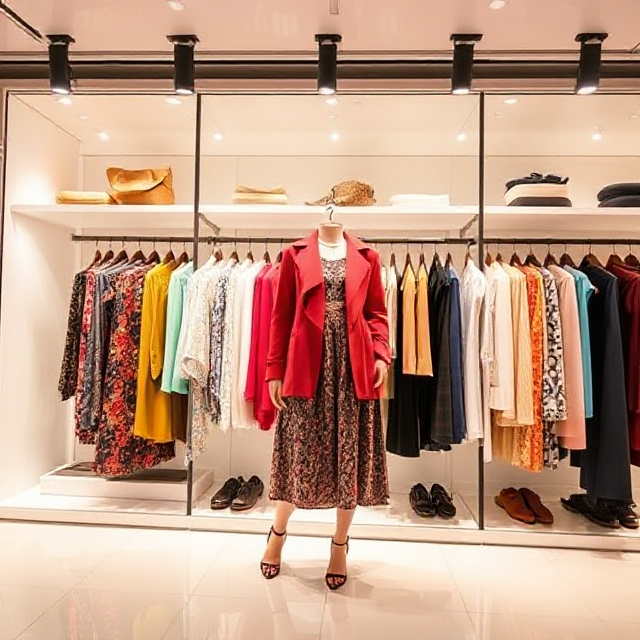
The online fashion industry has grown exponentially in recent years, with e-commerce dominating the retail landscape. From independent designers to global brands, online fashion stores offer a lucrative opportunity for entrepreneurs looking to break into the market. This guide explores the essential elements of building a successful and profitable online fashion store.
1. Understanding the Online Fashion Market
Global Growth and Trends
The global online fashion market is expected to reach $1 trillion by 2025, fueled by technological advancements and changing consumer behaviors. Key trends shaping the industry include:
- Sustainable fashion: Consumers increasingly prefer eco-friendly and ethical fashion brands.
- Personalization and AI-driven recommendations: AI-powered tools enhance customer shopping experiences.
- Social commerce: Platforms like Instagram, TikTok, and Pinterest drive sales through influencer marketing and shoppable posts.
- Augmented Reality (AR) fitting rooms: AR technology allows virtual try-ons, reducing return rates.
2. Key Steps to Building a Profitable Online Fashion Store
A. Identifying a Niche
A defined niche helps differentiate your brand in a competitive market. Popular niches include:
- Sustainable and eco-friendly fashion
- Luxury and designer wear
- Streetwear and urban fashion
- Activewear and athleisure
- Plus-size or inclusive fashion
- Vintage and retro styles
B. Selecting a Business Model
Choosing the right business model is crucial for profitability. Options include:
- Dropshipping: No inventory required; you partner with suppliers who ship products directly to customers.
- Private Labeling: Create and sell your brand’s unique designs using third-party manufacturers.
- Print-on-Demand (POD): Ideal for custom apparel with unique designs printed after purchase.
- Wholesale/Retail: Stock and sell products in bulk, often from established brands.
- Subscription Box Model: Customers receive curated fashion items on a recurring basis.
3. Setting Up Your Online Fashion Store
A. Building a User-Friendly Website
Your website is your primary storefront. Key features for success include:
- Mobile responsiveness: Over 70% of online fashion purchases are made via mobile devices.
- Fast loading speeds: Pages should load within 2-3 seconds to prevent customer drop-offs.
- Seamless navigation: Clear categories, search functionality, and filters improve user experience.
- High-quality images and videos: Detailed visuals enhance buyer confidence.
- Secure payment gateways: Options like PayPal, Stripe, and Apple Pay increase conversions.
B. Leveraging E-Commerce Platforms
Popular platforms for hosting an online fashion store include:
- Shopify
- WooCommerce (WordPress)
- BigCommerce
- Wix eCommerce
- Magento
C. Sourcing Products and Managing Inventory
- Work with reliable suppliers: Platforms like Alibaba, Faire, and Tundra can connect you with quality vendors.
- Use inventory management software: Tools like TradeGecko and Stocky streamline stock control.
- Offer limited collections: Scarcity can drive demand and boost sales.
4. Marketing and Driving Sales
A. Social Media Marketing
Fashion is highly visual, making platforms like Instagram, TikTok, and Pinterest ideal for marketing.
- Influencer collaborations: Partner with fashion influencers to expand reach.
- User-generated content (UGC): Encourage customers to share photos wearing your brand.
- Paid advertising: Use Facebook Ads and Google Shopping Ads for targeted promotions.
B. Search Engine Optimization (SEO)
Optimizing your website for search engines improves organic traffic.
- Keyword-rich product descriptions
- Blog content on fashion trends and styling tips
- Backlinks from fashion blogs and media outlets
C. Email Marketing & SMS Campaigns
- Offer personalized product recommendations.
- Send abandoned cart reminders to recover lost sales.
- Provide exclusive discounts to loyal customers.
D. Leveraging Marketplaces
Expand your brand by selling on platforms like:
- Amazon Fashion
- eBay
- Etsy (for handmade or vintage fashion)
- ASOS Marketplace
5. Managing Customer Experience and Retention
A. Providing Excellent Customer Service
- Offer 24/7 chat support and a detailed FAQ section.
- Provide hassle-free return and exchange policies.
B. Loyalty Programs and Discounts
- Implement a rewards program to encourage repeat purchases.
- Offer referral discounts to attract new customers.
C. Analyzing Customer Data for Continuous Improvement
- Use tools like Google Analytics and Hotjar to track customer behavior.
- Adjust marketing strategies based on performance metrics.
6. Scaling Your Online Fashion Business
A. Expanding Product Lines
- Introduce complementary products like accessories, shoes, or beauty items.
B. Exploring Global Markets
- Offer international shipping and localized websites.
C. Automating Business Processes
- Use chatbots for customer support.
- Implement AI-driven product recommendations.
Starting and running a profitable online fashion store requires strategic planning, innovative marketing, and excellent customer service. By identifying a niche, choosing the right business model, and leveraging digital marketing tools, entrepreneurs can build a successful fashion brand that stands out in the competitive e-commerce landscape. With dedication and adaptability, your online fashion store can thrive and generate substantial revenue in the ever-evolving fashion industry.
